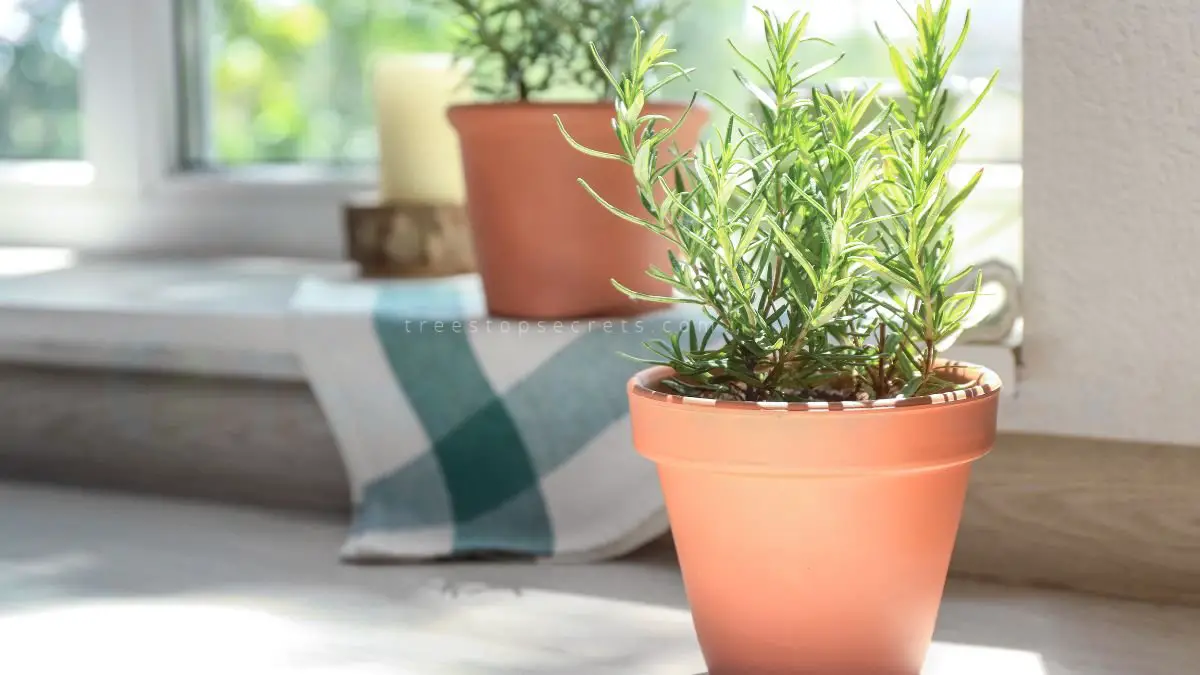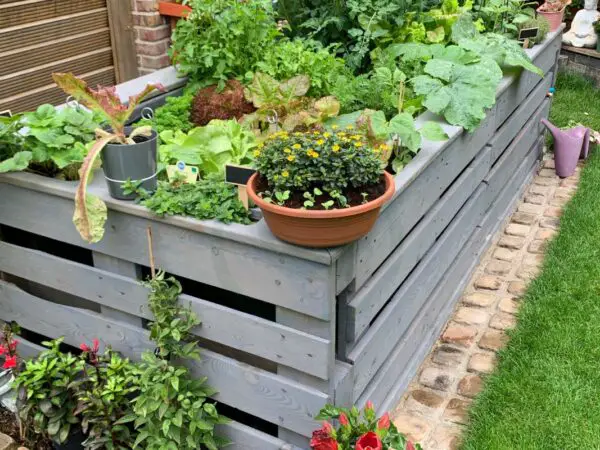Growing rosemary indoors can be a rewarding experience, adding fresh flavor to your dishes all year round. Contrary to its hardy outdoor nature, indoor rosemary requires special attention and care indoors to thrive, especially against powdery mildew on its foliage. Understanding the right balance of sunlight, water, and soil is key to keeping your rosemary plant healthy and vibrant.
Whether you're a seasoned gardener or just starting out, this guide will provide you with practical tips and tricks to ensure your indoor rosemary plant flourishes. From proper watering techniques to optimal placement in your home, we'll cover everything you need to know to successfully care for your beloved herb.
Key Takeaways
- Understand the specific care needs of your rosemary plant to ensure its health and growth.
- Select a well-draining pot and suitable soil mix to provide optimal growing conditions for your indoor rosemary.
- Place your rosemary plant in a sunny location with consistent temperatures to promote vigorous growth.
- Water your rosemary plant sparingly and fertilize it moderately to prevent root rot and encourage foliage development.
- Regularly prune your rosemary plant to maintain its shape and promote bushier growth.
- Keep an eye out for common pests and diseases that can affect rosemary plants and take prompt action to manage them effectively.
Understanding Rosemary Care
Growth habits
Rosemary is a perennial evergreen shrub that can grow up to six feet tall in warmer zones. To maintain its shape and encourage branching, it's essential to prune regularly.
Indoor vs outdoor growth
Rosemary is versatile and thrives both indoors and outdoors. For indoor growth, ensure the plant receives bright full sun exposure. In colder regions, it's advisable to bring the plant indoors before temperatures drop.
Seasonal needs
Adjust your care routine for rosemary based on seasonal temperature changes. To promote optimal growth, consider harvesting rosemary throughout the year. When harvesting, remember to dry rosemary by hanging branches upside down.
Selecting the Right Pot and Soil
Pot size and material
Choosing a pot for your rosemary plant is crucial. Opt for a pot that has ample drainage holes to prevent waterlogging, which can harm the plant. It's advisable to select a slightly larger pot than its current one to allow room for root growth. For optimal breathability, consider using terracotta or clay pots.
When it comes to selecting the right pot size and material, here are some essential tips:
- Choose a pot with sufficient drainage holes.
- Opt for a pot that is slightly larger than the current one.
- Consider terracotta or clay pots for better breathability.
Soil type and pH
The soil you use plays a significant role in the health of your rosemary plant. Rosemary thrives in soil that is rich, well-draining, and has a sandy mix. To prevent waterlogging, ensure that the soil allows excess water to drain efficiently. Aim for a soil pH level that is slightly acidic to neutral for optimal growth.
Here are some key points to remember about soil type and pH when caring for your rosemary plant:
- Use rich soil with a sandy mix.
- Ensure the soil drains well to avoid waterlogging.
- Aim for a slightly acidic to neutral pH level.
Drainage essentials
Proper drainage is essential for maintaining a healthy environment for your rosemary plant. Make sure that the pots you choose have adequate drainage holes to allow excess water to escape easily. Using a mix of sand and soil can help improve drainage and prevent water stagnation, which can lead to root rot.
When it comes to ensuring proper drainage for your rosemary plant, keep these points in mind:
- Check that your pots have enough drainage holes.
- Use a combination of sand and soil for improved drainage.
- Avoid water stagnation in the pots to prevent root rot.
Lighting and Temperature Requirements
Ideal light exposure
Placing your rosemary plant in a bright east, west, or south-facing window is crucial for its growth. Aim to provide at least 6 hours of direct sunlight daily. If you notice weak growth or leaf drop, it's a sign that the plant isn't getting enough light.
Temperature preferences
Rosemary thrives in warm temperatures, so ensure the environment is cozy. During winter in colder climates, it's best to bring your rosemary indoors to protect it from harsh weather conditions. Prevent any potential damage by shielding it from frost.
Watering and Fertilizing Rosemary
Watering schedule
When caring for a rosemary plant, water it every other week or when the soil feels dry to the touch. Allow the soil to slightly dry out between waterings to prevent root rot. Adjust the watering frequency based on the humidity levels in your home environment.
Fertilizer types and frequency
Minimal fertilization is required for a healthy rosemary plant. Use a balanced fertilizer sparingly to avoid overfeeding. Apply the fertilizer during the growing season to support optimal growth without overwhelming the plant.
Pruning and Maintenance
Regular pruning techniques
Pruning maintains shape, harvest encourages branching, and trimming dead stems promotes healthy growth. When pruning, focus on different parts of the plant for optimal results.
Annual soil refresh
Refresh soil yearly to replenish nutrients, ensuring the plant's health. Replace the topsoil with a fresh mix to provide essential nutrients for robust growth. Check for compacted soil and loosen it as needed.
Root pruning basics
Trim roots during repotting to prevent overcrowding and promote healthy growth. Before replanting, gently tease out the roots to ensure they have space to grow effectively. Any damaged or rotting roots should be pruned carefully.
Pest and Disease Management
Common pests
Watch for spider mites and aphids. These tiny insects can damage your rosemary plant by sucking sap from its leaves. Use neem oil or insecticidal soap to control these pests effectively. Inspect your plant regularly to catch any signs of infestation early on.
Disease prevention
To prevent diseases, ensure good air circulation around your rosemary plant. Poor air circulation can lead to issues like powdery mildew, which thrives in humid conditions. Avoid overwatering your plant as excessive moisture can cause root rot, a common problem that affects rosemary plants. Promptly remove any infected parts to prevent the spread of diseases.
Harvesting Your Rosemary
Best time to harvest
Harvest rosemary throughout the year, picking leaves in the morning for the best flavor. Avoid harvesting during flowering for optimal taste.
Harvesting methods
Harvest leaves by cutting stems with sharp scissors. Dry rosemary by hanging branches upside down and store dried leaves in a lidded glass jar or freezer.
Propagation Tips
Seed vs cutting propagation
Starting with a small plant is more efficient for quicker growth. Propagation through cuttings yields faster results compared to using seeds. While seeds can be utilized, they demand more time and effort.
Rooting conditions
To ensure optimal root development, it is crucial to have well-draining soil. Consistently moist soil during the rooting process is essential for successful propagation. Providing bottom heat can significantly accelerate root growth.
Troubleshooting Common Issues
Over or under-watering signs
Yellowing leaves may indicate overwatering. Wilting leaves suggest underwatering. Adjust watering frequency based on plant needs.
Light-related problems
Weak growth and leggy stems signal insufficient light. Leaf drop can occur in low-light conditions. Ensure 6 hours of direct sunlight daily for optimal growth.
Pest and disease solutions
Use neem oil for pest control. Prune infected parts to prevent disease spread. Improve air circulation to deter pests and diseases.
Closing Thoughts
Taking care of your indoor rosemary plant involves selecting the right pot and soil, ensuring proper lighting and temperature, managing watering and fertilizing, conducting regular pruning, and being vigilant against pests and diseases. Harvesting and propagating your rosemary will further enhance your gardening skills. By troubleshooting common issues promptly, you can maintain a healthy and thriving rosemary plant. Remember, consistency is key in caring for your rosemary plant indoors. Stay observant and attentive to its needs to enjoy a bountiful harvest and aromatic foliage year-round.
Now that you have all the tools to care for your indoor rosemary plant successfully, put your knowledge into action. Start implementing these tips today to create a flourishing indoor herb garden. Your dedication will not only yield beautiful rosemary but also enhance your gardening expertise. Happy gardening!
Frequently Asked Questions
How often should I water my indoor rosemary plant?
Water your indoor rosemary plant only when the top inch of the soil feels dry to the touch. Ensure proper drainage to prevent waterlogging, which can lead to root rot.
What type of soil is best for growing rosemary indoors?
Use well-draining soil with a mix of potting soil and coarse sand or perlite for optimal growth. This combination helps prevent water accumulation around the roots.
How much sunlight does an indoor rosemary plant need?
Place your indoor rosemary plant in a location that receives at least 6-8 hours of direct sunlight daily. If natural light is insufficient, consider supplementing with a grow light.
When and how should I prune my indoor rosemary plant?
Prune your indoor rosemary plant in the spring before new growth begins. Trim back leggy stems to promote bushier growth and remove any dead or damaged branches for overall plant health.
How can I propagate my indoor rosemary plant?
You can propagate your indoor rosemary plant through stem cuttings. Simply take a 4-6 inch cutting from a healthy branch, remove the lower leaves, dip the cut end in rooting hormone, and place it in moist soil to root.
Image Source: Paid image from CANVA



